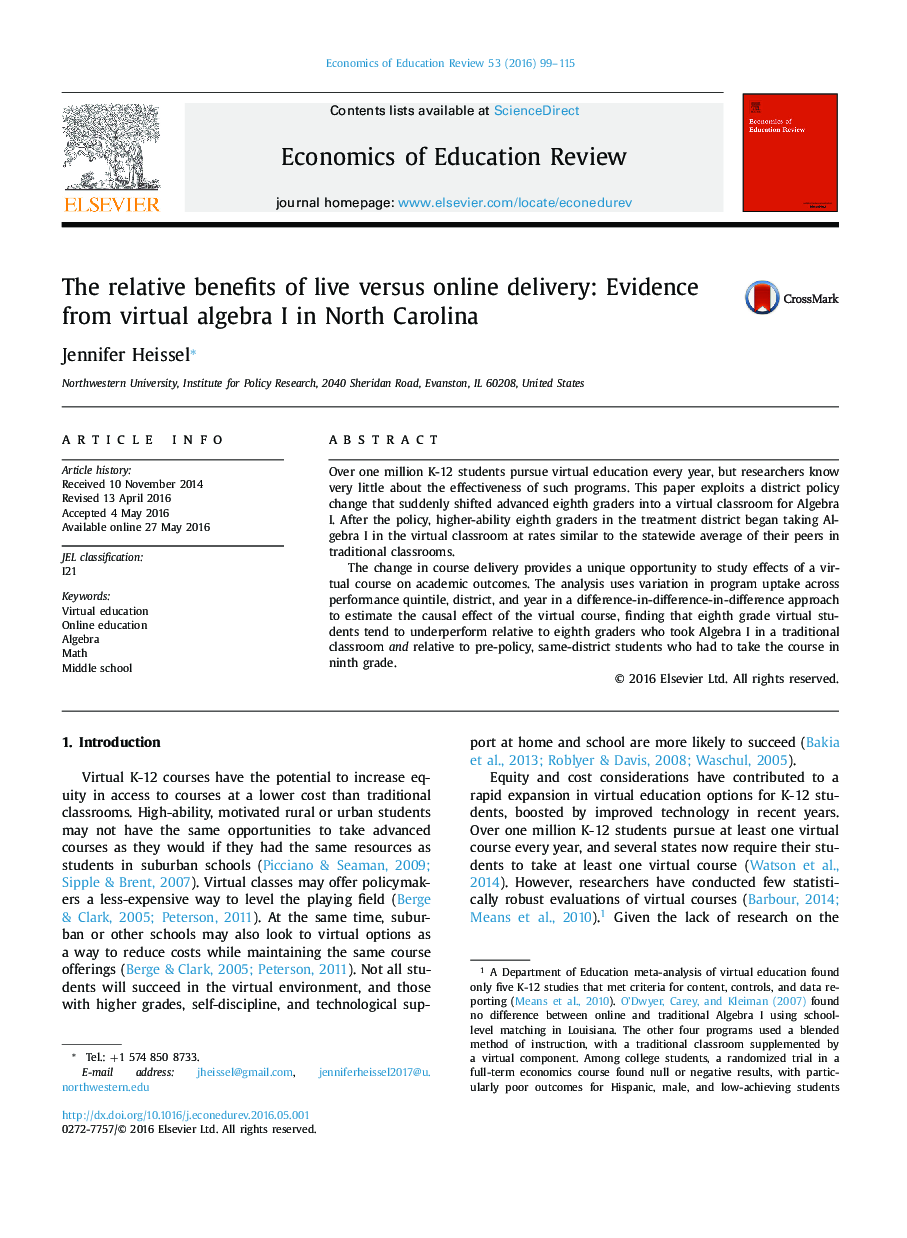| Article ID | Journal | Published Year | Pages | File Type |
|---|---|---|---|---|
| 354274 | Economics of Education Review | 2016 | 17 Pages |
•The paper uses two methods to identify effects of 8th graders taking Algebra I virtually.•A district policy change allows a natural experiment to examine test score changes.•A propensity score matching strategy confirms findings hold in the state as a whole.•Students in virtual Algebra I perform worse than similar students in regular classes.
Over one million K-12 students pursue virtual education every year, but researchers know very little about the effectiveness of such programs. This paper exploits a district policy change that suddenly shifted advanced eighth graders into a virtual classroom for Algebra I. After the policy, higher-ability eighth graders in the treatment district began taking Algebra I in the virtual classroom at rates similar to the statewide average of their peers in traditional classrooms.The change in course delivery provides a unique opportunity to study effects of a virtual course on academic outcomes. The analysis uses variation in program uptake across performance quintile, district, and year in a difference-in-difference-in-difference approach to estimate the causal effect of the virtual course, finding that eighth grade virtual students tend to underperform relative to eighth graders who took Algebra I in a traditional classroom and relative to pre-policy, same-district students who had to take the course in ninth grade.
